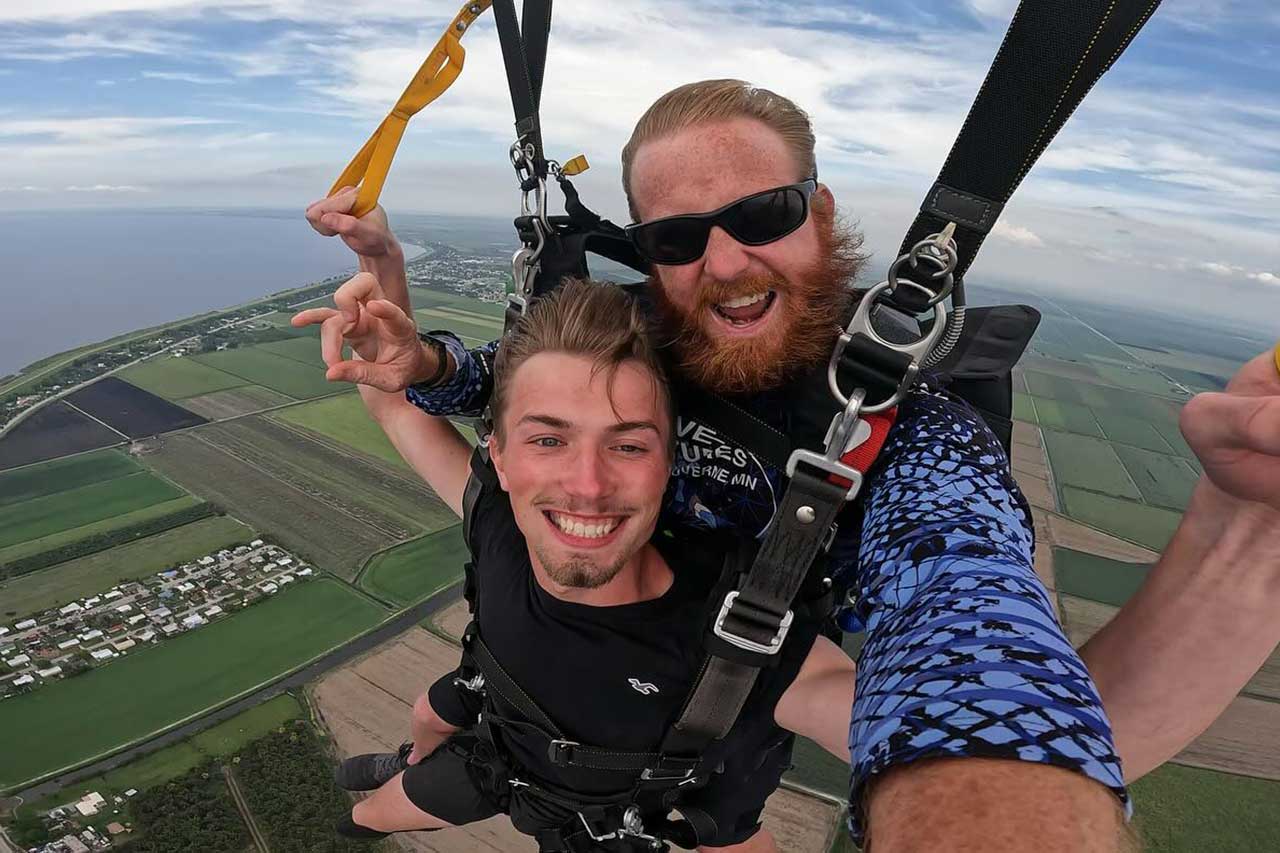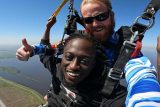Skydiving and the Weather: Understanding How Forecasts Affect Your Jump
Tandem Skydiving
Posted by: Skydive Palm Beach
5 months ago
You have your tandem skydive booked and you’re pumped! But as you keep an eye on the forecast, you start to wonder how the weather conditions will affect your skydive. Skydiving, like many outdoor activities, is at the mercy of the weather.
While waking up to a sunny blue-sky morning makes it easy to determine the best weather for skydiving, these are not the only conditions we can jump in. But it’s hard to know if we can skydive in partly cloudy weather, or what about skydiving in cold weather? Sometimes looking at the forecast can lead us to make the wrong assumptions. So, how exactly does weather affect skydiving?
This article we will delve into the details regarding the weather, how it affects your big day, and explain why skydivers around the world wish each other “Blue Skies!”

Skydiving Weather
The best weather conditions for skydiving include blue skies, temperatures in the 70s, and light winds. However, not every day looks like this, and other weather scenarios still make for beautiful jump weather. On the other hand, certain weather could hinder or prevent our jump altogether. Let’s explore how various weather conditions impact skydiving.
Cloud Cover
Seeing a cloudy forecast doesn’t always mean a no-go for skydiving. However, skydiving through clouds is illegal and unsafe. Visibility is crucial for safe skydiving, allowing the pilots to navigate to altitude, instructors to spot the dropzone, and ensuring that the airspace is clear before the jump (from other aircraft for example).
Opening our canopy in clouds is highly undesirable. If we open above the clouds, we need enough of a break in the clouds to ensure safe navigation. So, can you skydive in cloudy weather? Don’t assume just because you see clouds in the forecast, we cannot jump. Sometimes the clouds are high enough that we can safely jump under them. Also, if the holes in the cloud cover are substantial enough, we can safely jump between the clouds. And those big puffy clouds can make for a breathtaking backdrop!

Rain
Why can’t you skydive in the rain? Skydiving in the rain isn’t just uncomfortable; it can also impact visibility and safety. Raindrops hitting you at 120 mph feel like needles, which does not make for a pleasant experience.
Additionally, turbulent weather accompanying rain cells can be dangerous. Precipitation can cause moisture to accumulate on goggles or face shields, further impairing visibility during freefall and canopy descent. Even if the rain itself isn’t heavy, the moisture in the air can create a haze that obscures the landscape below. Moreover, wet parachutes have different aerodynamic properties than dry ones, which can affect canopy control and landing accuracy.
Winds
Every dropzone will have their own wind limits to ensure safe landings. High winds can be dangerous for landing – we don’t want to go backwards when we come in to land! Factors such as wind direction, speed, and surrounding obstacles all influence these limits. Wind gusts, even in light winds, can pose risks to canopy flight. All of these considerations will be taken into account when making decisions about whether or not we will be skydiving on the day of your jump.
Temperature
While the temperature doesn’t directly affect skydiving safety, it is important to be aware of the weather conditions when planning your skydive so that you can dress appropriately to ensure comfort during your jump. Layers are your friend!

Embrace the Skies: Prepare for Adventure and Soar with Confidence
Stay updated on weather conditions leading up to your scheduled jump. While skydiving weather forecasts provide valuable insights, weather can be unpredictable. It’s essential to remain flexible and prepared for potential changes. We always keep our fingers crossed for the best weather for skydiving, but weather can change swiftly and unexpectedly, leading to delays or rescheduled jumps. If you are uncertain about weather conditions, it’s best to touch base with us before heading out.
On the dropzone, a popular saying is “You can’t skydive if you’re not here.” Forecasts aren’t infallible and being on-site increases your chances of seizing the jumping opportunity. Trust the expertise of your instructors, pilots, and dropzone staff – we will prioritize your safety above all else.
By understanding how weather influences skydiving, you can better prepare for your adventure and ensure a safe and enjoyable experience. So, book your jump, keep an eye on the forecast, dress appropriately, and get ready to soar through the stunning skies of Palm Beach! Blue skies!
Categories:
You May Be Interested In:

What It Takes to Become a Tandem Parachute Jump Instructor
3 weeks ago by Skydive Palm Beach

How Fast Do Tandem Skydivers Fall?
2 months ago by Skydive Palm Beach

Why Tandem Skydiving is Perfect for First-Time Jumpers
3 months ago by Skydive Palm Beach

How Long Does it Take to Skydive?
5 months ago by Skydive Palm Beach
